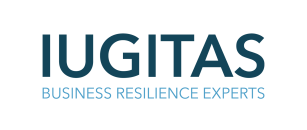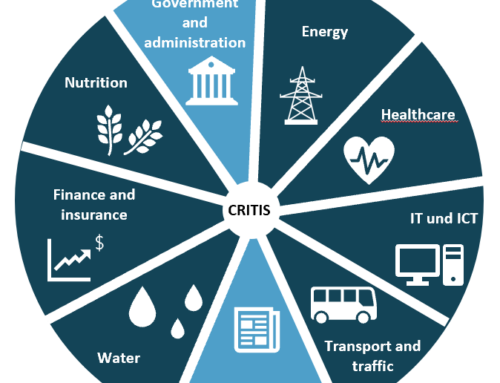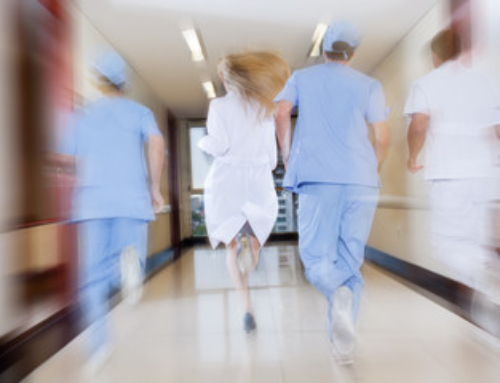The course of corona disease worldwide shows that a massive increase in the number of infected individuals is also to be expected in Germany. At present, there are still very few infected people compared to China and Italy. Pandemic measures are needed to reduce the spread, especially in hospitals.
Corona, in the form of Covid-19, is a virus that can be transmitted from person to person. Vaccine protection against it has not yet been developed, so the only way to prevent it from spreading is through good hygiene and isolation of those infected. The legal basis for this in Germany is the Infection Protection Act, which requires compliance with the state of the art in medicine and epidemiology in order to prevent the spread. According to Section 4 (1) of the Infection Protection Act, the Robert Koch Institute is named to prescribe and develop this state of the art. Accordingly, the specifications of the Robert Koch Institute are to be regarded as binding and therefore also apply to hospitals.
Within the framework of clinical risk and crisis management, hygiene and consequently prevention of infection must be considered as a topic. Up to now, only existing infections have been perceived as a potential danger and combated. However, Corona shows that new diseases are possible and an adapted response is necessary to minimize their spread. Accordingly, from the perspective of a pandemic, the measures taken so far are to be considered rudimentary.
But which measures are really useful and necessary to prevent the spread of Corona and, above all, to protect medical personnel from infection so as not to place an additional burden on the German healthcare system?
The activation of these measures should be linked to objective criteria, e.g. the number of cases per 10 million inhabitants or a number of cases within a county. We have provided some thoughts on possible measures:
- Increased protection of infection control materials from theft.
- Cancel all business trips, trade fair visits as well as vacations.
- Motivate your highly stressed staff and create incentives as well as perspective. Provide daily updates on the current situation.
- Daily briefing of all CA and OA about current case numbers nationwide, epidemiology and current treatment algorithms. Designate a responsible person to actively monitor the trade press and current publications and multiply the results.
- Daily monitoring of own treatment capacity, uptake, follow-through, and sick leave. Networking with other homes in the region and non-contact (phone or video conference) on status and best practice.
- Participate in WHO online training: https://openwho.org/channels/covid-19
- Focused training of staff in advanced hygiene measures.
- Increased capacity in laundry and intensified cleaning interval of relevant contact surfaces.
- Establishment of a separate cost center to represent costs incurred in the context of the pandemic and to pass them on, e.g., to the Landschaftsverband.
- “Beard decree”: introduction of a hospital guideline on beard growth. Background is that the effectiveness of FFP2 and FFP3 masks is already reduced by approx. 30% in the case of a 3-day beard growth.
- Cancel elective procedures. Here there is a risk of either infecting medical staff by infected but untested patients and/or exposing elective patients to the germ load and risk of infection in the hospital. Also, the supply capacity is needed elsewhere in the following days. Furthermore, this saves important consumables (infection protection, masks, ventilation accessories, medications). Any medical products that become free are to be collected and distributed elsewhere.
- Discharge patients as early as possible. Protect uninfected patients by discharging them to home or short-term care as early as medically justifiable.
- Enact a visitor freeze for the entire hospital.
- Screen every person entering the hospital for symptoms of infection and fever. Hand disinfection under supervision.
- Separate access routes and set up a separate airlock for infection patients.
- Set up a respiratory care unit: record all respiratory equipment, perform function tests if necessary, and repair old equipment if necessary. Collect vacant ventilators and medical supplies in one ward, which becomes an infection IMC.
- Check oxygen supplies daily and replenish if necessary. Stock oxygen in cylinders to be able to ventilate independently of the oxygen supply network.
- Make arrangements with the health department.
- Keep purchasing under control: Record current inventory of supplies with a focus on infection control supplies, disinfection products, ventilators, oxygen supplies, and infusion supplies. Research which supply chains are still able to deliver and within what timeframe. In consultation with health departments, replenish the legally required 14-day stockpile.
- Check reactivation of skilled personnel. Actively review their staff lists and contact medical and nursing staff who are in other specialties such as administration, training, school. Also contact retired staff.
- Contact outpatient centers, office-based anesthesiologists, ambulance and civil protection agencies: what capacities for diagnostics and ventilators are available there? What kind of technical, personnel and organizational support is available?
- Preplanning and, if necessary, setting up of a respiratory care unit: recording of all respiratory equipment, function test if necessary and repair of old equipment if necessary. Vacated ventilators and medical devices are collected in a ward, this becomes an infectious IMC.
- Pre-plan cohort isolation in a separate part of the building or ward.
- Develop a triage and treatment algorithm.
- Develop a decision support tool for the points
- Utilized treatment capacity in ICU and IMC. Which patient gets which treatment, e.g., based on a valid prognosis score.
- Up to what level of risk to staff can operations be maintained if, for example, infection control materials are no longer available.
Update and addendum 03/10/2020:
Additional measures:
- Close company cafeteria to external visitors
- Set up a company kindergarten or support employees with childcare
- Examine the use of compressed air suits, which can be connected to the compressed air supply of the hospital to save consumables.
- Consider vaccinating staff with universal flu vaccine FLU.
Source: https://aerztezeitung.de/Medizin/Potenzieller-Universal-Grippeimpfstoff-FLU-v-zeigt-Wirkung-407428.html - Make arrangements with nursing homes: only allow hospitalization of nursing home residents after very limited treatment indications. Upon discharge from a hospital, prophylactic 14-day quarantine.
Update and Addendum 3/11/2020:
- Increase cleaning staff and hygienists.
- Clarify how many more beds they can put into service on short notice
- Work out a procedure and clarify if you can do a PCR on every patient with respiratory infections.
- Check which recommendations of the “Italian Critical Care Nurses” you can implement: https://pastsite.aniarti.it/sites/default/files/documenti/covid_19_aniarti_to_efccna.pdf?fbclid=IwAR19p4g0SVAQF-RoGnK9BVgMO0wZkohwsUHIYlmxQzi06JKfysuJ5ckqVWY
Update and addendum 3/13/2020:
- Create retreats and sleeping accommodations for staff.
- Clarify storage and removal of deceased, infected patients
- Review inventory and supply of blood products, encourage blood donors if necessary.
Update and Addendum 3/14/2020:
- Create a protocol for potentially infected personnel: https://apps.who.int/iris/bitstream/handle/10665/331340/WHO-2019-nCov-HCW_risk_assessment-2020.1-eng.pdf
Need assistance or expert advice? Give us a call.
An article by Jens von den Berken assisted by Anna Müller, published on 09 March 2020
Translated by Charlotte Ley






